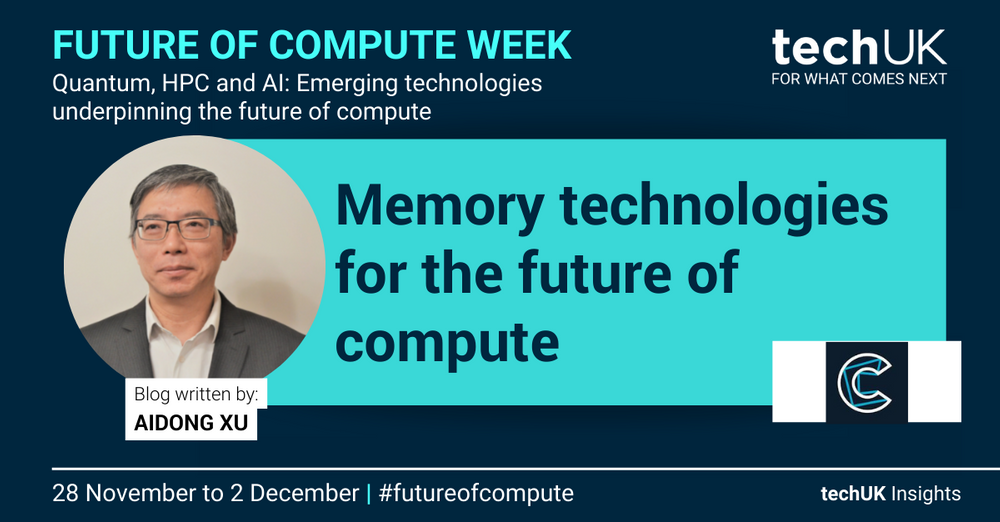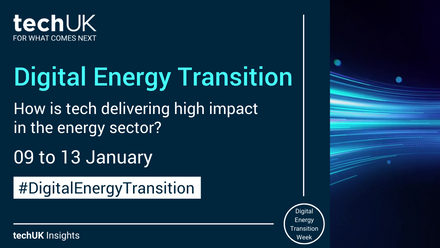Memory technologies for the future of compute

Author: Dr Aidong Xu, Head of Semiconductor Capability, Cambridge Consultants
The Internet of things, big data and artificial intelligence collect and process mass amounts of data. They hold common requirements of power efficiency, low latency data transfer and high-speed processing. The advancement of HPC will play a crucial role in processing this data. However, memory access is often the bottleneck. There is a strong need for memory technology that’s compatible with these demands, which is driving innovation across a range of areas. Central to this is non-volatile memory (NVM).
These emerging non-volatile memory technologies fill the gap between flash memory and Random-Access Memory (SRAM and DRAM) in terms of density, speed and power consumption. This article gives an overview of some of the exciting NVM technologies, their advantages and challenges.
Phase-change memory (PCM or PC-RAM)
Among the emerging NVM technologies, Phase-Change Memory (PCM) is probably the most mature. It addresses the gap between DRAM and NAND flash, featuring fast performance, ultra-low latency and greater endurance than NAND flash memory. The data storage is based on changes in resistance. It uses electrical current to cause a property change that modifies the cell's resistance level. Each cell holds a single piece of data and represents a 1 or 0, depending on its resistance. The transistor-less architecture reads and writes at low voltage, makes it more efficient compared with flash memory. The emerging compute-in-memory (CIM) chip designs are often based on PCM technology.
Resistive RAM (RRAM or ReRAM)
Resistive RAM (RRAM) contains a memristor, an electrical component made from a specially formulated dielectric material whose resistance varies depending on the voltage applied. RRAM is based on resistance switching, which increases the flow of current in one direction and decreases the flow of current in the opposite direction. Dielectric material, which generally doesn't conduct electric current, will suddenly undergo a dielectric breakdown and conduct a current at high voltages. Conventional dielectric material is permanently damaged by a breakdown. However, in a memristor, the materials used result in a temporary, reversible breakdown. Compared with NAND flash, RRAM offers faster read and write speeds, higher endurance and greater storage density, while consuming less power. Memristor technologies are well suited for memory in industrial and IoT sensors.
Magnetoresistive RAM (MRAM)
MRAM relies on magnetic states to store bits of data as opposed to using electrical charges as DRAM and NAND flash do. MRAM technologies make it possible to deliver speeds much faster than flash and nearly as fast as SRAM, while still retaining data when power is lost. MRAM uses a pair of ferromagnetic metal plates separated by a thin insulating material layer. The orientation of the two magnetic fields determines whether a binary bit is a 1 or 0. MRAM can perform read and write operations faster than DRAM while using less power. It is therefore sometimes considered to be universal memory ideally suited for applications ranging from system computing to storage. Unlike flash memory, it doesn't wear out and can be read from and written to until the physical material itself degrades. MRAM could be an ideal DRAM replacement.
Spin-transfer torque MRAM (STT-MRAM)
STT-MRAM is an MRAM variation developed to cut power use. STT-MRAM evaluates the torque applied between the magnetic layers, making more efficient use of the Magnetoresistive properties. It is based on the concept that electrons have angular momentum or spin. Using electric current through a magnetic field, STT-MRAM changes the electron spin to an up or down state. The strong points for STT-RAM are that it has one of the highest endurance (number of read-write cycles) among all NVM technologies and requires much less write current than conventional or toggle MRAM. The downside is the need to maintain the spin coherence and higher speed operation still requires relatively high power. Therefore, it may need further development before becoming economically viable as a DRAM replacement.
Nanotube RAM (NRAM)
Nanotube RAM (NRAM) is made up of a film of interlinked carbon nanotubes layered on a silicon substrate. The nanotube layer sits between two electrodes and can be electrically compressed or expanded so the nanotubes are touching each other or slightly separated to create a high or low state of resistance, representing “0” and “1” states. NRAM is claimed to be as fast as and denser than DRAM, uses no power in standby mode, and consumes 100x less write energy per bit than flash and is also highly resistant to environmental issues, such as extreme temperature.
Other technologies
There are several other proprietary technologies, mainly derived from the technologies above, that offer unique properties for certain applications. These include Racetrack, FRAM (or Ferroelectric RAM), Crossbar, E-Field MRAM etc. The emerging NVM technologies I’ve discussed in this article will play a central role in future of compute, addressing the need to achieve both higher performance (speed, density, endurance etc.) and lower power consumption. They will also broaden the horizon by enabling in-memory-computing.
Dr Aidong Xu, Head of Semiconductor Capability, Cambridge Consultants
Aidong holds over 30 years’ experience across diverse industries, including with some of the leading semiconductor companies. He has managed large internationally based engineering teams and brought innovative industry-leading products into global market that have achieved rapid and sustained business growth. Aidong holds a PhD. in Power electronics and Power semiconductor

Rory Daniels
Rory joined techUK in June 2023 after three years in the Civil Service on its Fast Stream leadership development programme.

Ella Shuter
Ella joined techUK in July 2025 as Junior Programme Manager for Emerging Technologies.

Laura Foster
Laura is techUK’s Associate Director for Technology and Innovation.

Elis Thomas
Elis joined techUK in December 2023 as a Programme Manager for Tech and Innovation, focusing on Semiconductors and Digital ID.







